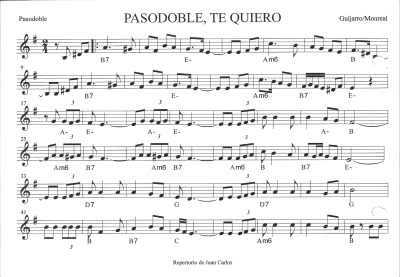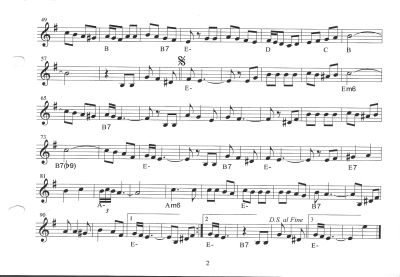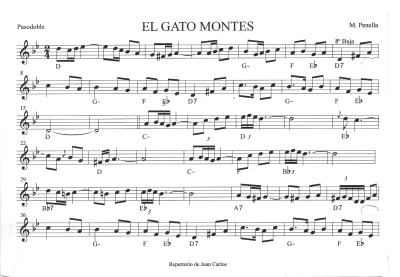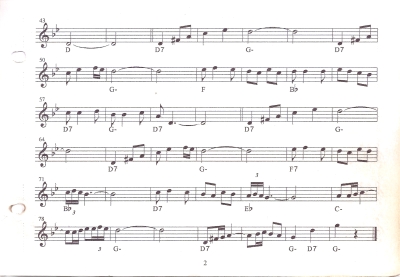Welcome to our forum. A Message To Our New and Prospective Members . Check out our Forum Rules. Lets keep this forum an enjoyable place to visit.
Currently working on errors from the latest (SimplePress) forum update. Many issues have been resoled and others are being worked on. Thank you for your patience.
 Topic RSS
Topic RSS



 (0 votes)
(0 votes) Regulars
 Offline
Offline








 PASODOBLE!
PASODOBLE!
THIS is the music I always associated with Spain and the bullfighting ring... probably because I watched too many old romantic movies growing up! 🤭 A bullfight looked like a dance between the bull & 'matador', who was romanticized as an artist (in a twisted sense).
Matador de toros (killer of bulls)... The style of the matador was regarded as being equally important as to whether or not he kills the bull. The more successful matadores were treated like rock stars, with comparable financial incomes, cult followings and accompanied by tabloid stories about their romantic conquests with women. (Bullfighter - Wikipedia)
Everyone recognize this one, played by Bogdan Costache?
"España cañí" (meaning "Gypsy Spain" in Spanish) is a famous instrumental Spanish piece of pasodoble music by Pascual Marquina Narro (1873–1948). The song was written around 1923 and first recorded in 1926. In English it is also known as the Spanish Gypsy Dance.
Its main refrain (eight bars of arpeggiated chords that go from E major to F major (with added 4 instead of 5) to G major and back) is arguably the best known snippet of Spanish music and is popular worldwide. (Wikipedia)
If you get a chance, watch the 1992 film "Strictly Ballroom" - it's a wonderful romantic comedy! Even though the pasodoble at the very end is stunning, there are many humorous scenes (like this one).
The POINT: Amature vs Master interpretation!
Regulars
 Offline
Offline








...there's more than one Pasodoble!
If you don't think Fiddlers play this kind of music in the USA - you're wrong!
One example, a couple Pasodobles have been handed down from the early 1900's to present day Fiddlers in New Mexico - that are pretty special!
Rudolph Valentino singing El Relicario 1923
Regulars
 Offline
Offline








Oops, sorry - I see I never shared any play-along "España Cañí" for Violin!
...that's because I could only find several FREE 'Mariachi' versions, which is strictly a MEXICAN genre - so the feel is different.
Still, might be a good place to start. If you can't learn by ear & wish to pursue this passionate music of the Pasodoble dance, invest in a good solo violin score!
Another version, "España Cañí" - Partitura para Mariachi - Versión: Nuevo Tecalitlán
Regulars
 Offline
Offline








I didnt realize that there are several 'types' of Pasodoble!
As a light March, it is played by Bands in parades & festivals & many can be heard at this YT Channel, Pasodobles, but I'm having trouble finding notation usable for Violin.
There ARE slower Pasodobles for small ensembles performing at family gatherings/celebrations. There is also a theatrical role-playing, Flamenco-like dance (I certainly mistook this as the only Pasodoble). The leader portrays the Matador, the follower portrays the 'cape' - mostly for entertainment.
Eduardo López Juarranz (Madrid 1800's) & Jaime Teixidor (Valencia, 1st half of 20th Century) - Band leaders, both famous for composing many Pasodobles for bands.
FOUND A STRING QUARTET SCORE PLAY-ALONG!!!!
"Amparito Roca" - Pasodoble by Jaime Teixidor. The story behind Amarito Roca.
I'm probably the only Fiddler who thinks all the PASODOBLES played on a trumpet WOULD SOUND BETTER ON THE VIOLIN!!!
There are MANY play-along scores for Pasodobles on YT, but the problem is they are usually for transposing instruments. You either have to play along by ear, or just play along with the sound turned off - because what you read will not sound right.
List of Transposing Instruments
From the Roots of Spanish Folk Music Thread:
The PASODOBLE - scores date back to 1780. Popular today in Valencia, especially during parades & festivals, but many were created to honor Bullfighters... so, scattered throughout Spain. Pasodoble as Ballroom Dance and Popular dance, known all over the World.
A hypothesis based on the dance's free figures and rhythm states that its binary rhythm and moderated movement points to an origin in traditional Spanish music and dances of the early 16th century. These dances, developed around 1538, were a gradual combination of Castillian music and dance (seguidillas) with the "garrotín", a fast and repetitive Romani couples dance, adapted into a march form.
Famous musicologist José Subirá considers that the origin of the style was a combination of military marches and light music from Spanish popular theatre, that gradually permeated the "entremeses" of more respectable plays. (Wikipedia)
There is also Pasodoble music played & composed in Mexico & South America - with their own special characteristics.
Regulars
 Offline
Offline








"Paquito el Chocolatero" is a Spanish Pasodoble created in 1937 by composer Gustavo Pascual Falcó (Valencia). Played by Evmolin.
Have to LOVE anything with the word CHOCOLATE in the title!
I did find MANY Pasodobles played in GALICIA!
They are SIMPLE MELODIES in 2/4 time, usually played on Gaita (Galician Bagpipe), but worth checking out - some have faster tempos & some slower. Here's a fabulous site with notation, printable PDFs & midi audio! ...I haven't had a chance to go thru more than the 1st page of tunes (there are MANY) - REALLY LOVE THE SOUND OF SOME OF THEM!
Folkoteca Galega - Pasodobles
- MANY tunes here! Free notation PDF's with transcribing feature & audio playback (for original setting).
Regulars
 Offline
Offline








"Pasodoble Te Quiero" - Gaby Cobo playing Violin! Composed by Genaro Monreal Lacosta , was known as 'Maestro Monreal' (Madrid).
1 Guest(s)


 Log In
Log In Register
Register











